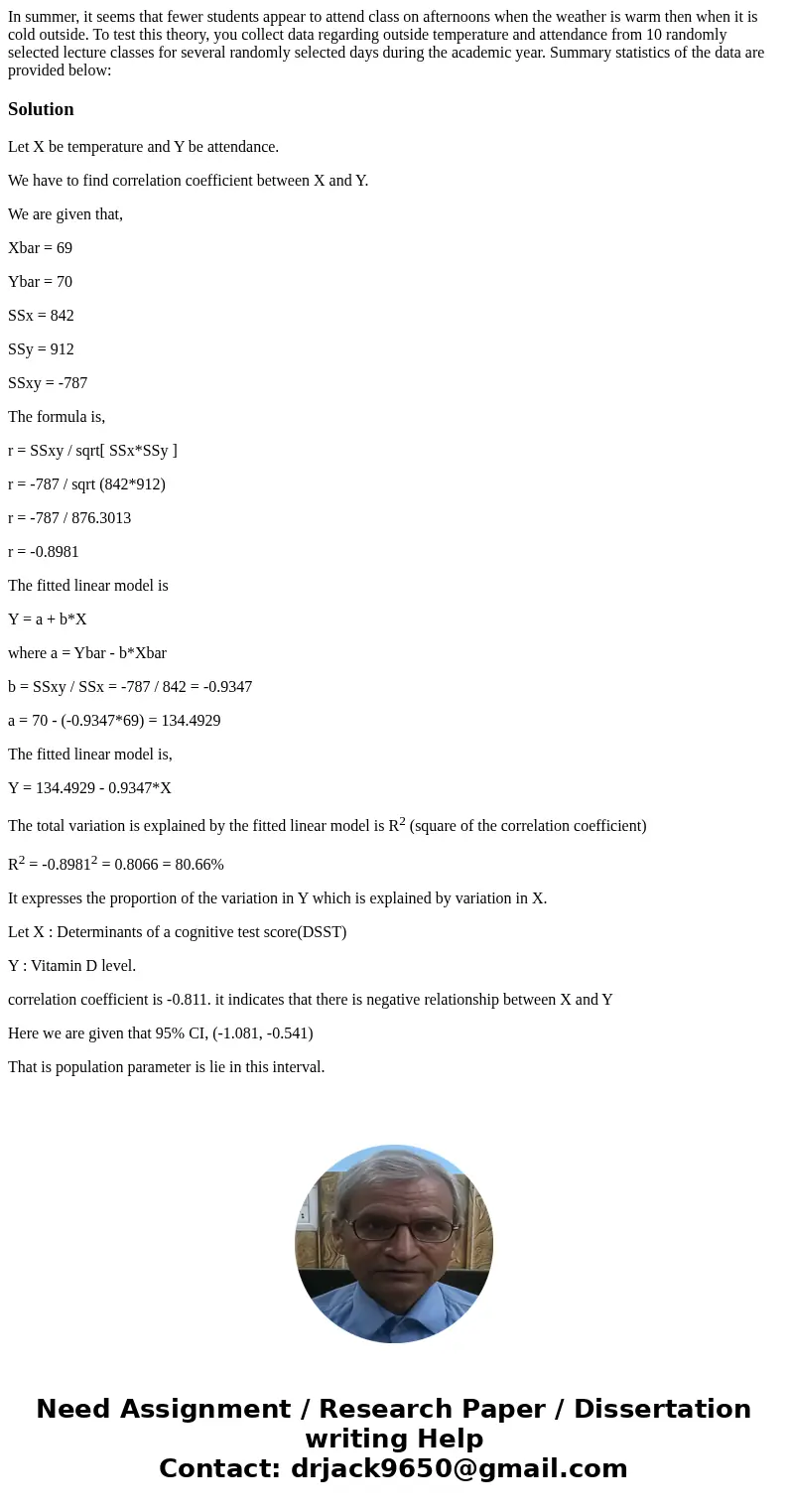In summer it seems that fewer students appear to attend clas
Solution
Let X be temperature and Y be attendance.
We have to find correlation coefficient between X and Y.
We are given that,
Xbar = 69
Ybar = 70
SSx = 842
SSy = 912
SSxy = -787
The formula is,
r = SSxy / sqrt[ SSx*SSy ]
r = -787 / sqrt (842*912)
r = -787 / 876.3013
r = -0.8981
The fitted linear model is
Y = a + b*X
where a = Ybar - b*Xbar
b = SSxy / SSx = -787 / 842 = -0.9347
a = 70 - (-0.9347*69) = 134.4929
The fitted linear model is,
Y = 134.4929 - 0.9347*X
The total variation is explained by the fitted linear model is R2 (square of the correlation coefficient)
R2 = -0.89812 = 0.8066 = 80.66%
It expresses the proportion of the variation in Y which is explained by variation in X.
Let X : Determinants of a cognitive test score(DSST)
Y : Vitamin D level.
correlation coefficient is -0.811. it indicates that there is negative relationship between X and Y
Here we are given that 95% CI, (-1.081, -0.541)
That is population parameter is lie in this interval.

 Homework Sourse
Homework Sourse